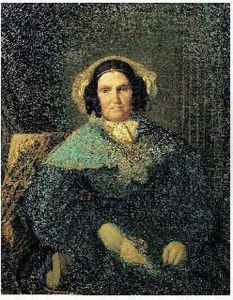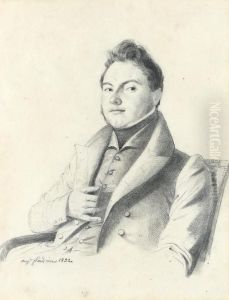Auguste Flandrin Paintings
Auguste Flandrin was a 19th-century French painter known for his religious and historical works, as well as his portraits. Born in Lyon on March 23, 1804, into a family that valued the arts, he was the younger brother of the more famous Hippolyte Flandrin, a pupil of Jean-Auguste-Dominique Ingres. He also had another brother, Paul Flandrin, who was a painter as well. The three brothers received their initial training in Lyon before Auguste and Hippolyte moved to Paris to study under Ingres at the École des Beaux-Arts.
Auguste's artistic career was deeply influenced by his brother Hippolyte and Ingres. Under Ingres' tutelage, he learned the neoclassical style of painting, characterized by its clarity of form, sober coloring, and smooth finish. Although he spent much of his life overshadowed by his brother's success, Auguste managed to build a reputation of his own, exhibiting at the Paris Salon and receiving commissions for religious works. His style, like that of his brother, was marked by its precision and adherence to the academic standards of the time.
Despite showing promise and talent in his field, Auguste Flandrin's life and career were cut short by illness. He died at a relatively young age on February 15, 1842, in Rome, where he had gone in hopes that the climate would improve his health. His works, though less known than those of his brother Hippolyte, reflect the same dedication to the neoclassical ideals of their shared mentor, Ingres. Today, Auguste Flandrin's paintings can be found in various museums and collections, where they stand as a testament to the artist's skill and the artistic legacy of the Flandrin family.

